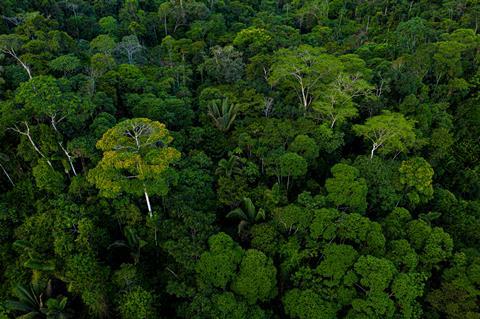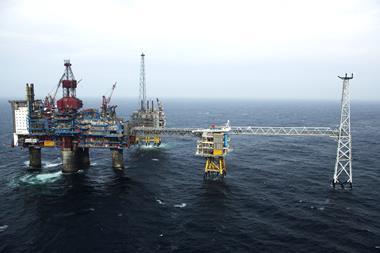Tracking the carbon-14 released by twentieth century nuclear weapons tests suggests that the biosphere cycles carbon more quickly than previously thought. This could be because plants store more carbon in short-lived shoots and leaves rather than in woody biomass. The results could mean plants are less able to offset climate change than had previously been estimated.
Numerous nuclear bomb tests in the 1950s and 1960s significantly elevated the amount of the radioactive carbon-14 isotope in Earth’s atmosphere. Its movement has subsequently been used to track atmospheric mixing and other environmental phenomena.
Now, climate physicist Heather Graven at Imperial College London and her colleagues have analysed carbon-14 levels from the period between 1963 and 1967, when there were no significant nuclear tests, to estimate the rate at which carbon is taken up by vegetation.
By focusing on the mid-1960s, the researchers were able to analyse data from a period when there was no new input of carbon-14 into the Earth-system, and, as the half-life of carbon-14 is about 5730 years, the decay would have been negligible. ‘The radiocarbon would have just been exchanging between the air, the plants and soils on land, and the ocean,’ explains Graven. ‘So then we just had to take into account how much was lost from the atmosphere and how much went into the ocean, and we could calculate how much went into the biosphere by taking the residual.’
There is this larger-scale turnover of carbon, and it seems like this is happening faster than models are simulating
While state-of-the-art computer models predict that vegetation takes up 43–76 billion tonnes of carbon per year, the researchers’ findings suggest a figure of at least 80 billion tonnes per year. The vast majority of this is ultimately returned to the atmosphere by processes such as grazing, harvesting or decomposition by aerobic organisms.
As carbon dioxide levels in the atmosphere have risen, the biosphere has absorbed some of this extra carbon. However, Graven says that ‘we’re not really quantifying that carbon sink’. She notes that if carbon is removed from the atmosphere more quickly, it is likely to be returned more quickly. ‘There is this larger-scale turnover of carbon, and it seems like this is happening faster than models are simulating,’ she says.

This could be explained if a larger proportion of the carbon is stored in smaller, shorter-lived shoots, leaves and leaves than in long-lived ‘woody biomass’ such as tree trunks, branches and large roots. Whatever the explanation, the shorter storage time needs to be considered when modelling the ability of vegetation to offset climate change, says Graven. ‘The carbon that’s within the living vegetation is not going to be stored there as long as we had previously estimated,’ she notes. ‘The idea that we can store even more carbon in the biosphere than what’s happening naturally is not really feasible.’
‘It’s huge for our field,’ says biogeochemist Lisa Welp at Purdue University in Indiana, US, who was not involved in the research. She says that ‘because there are so few ways to measure [the hidden flux of carbon in and out of land plants] all of them are significant’. According to Welp, it is unclear what specific implications this has for projecting future climate models, but she points out that ‘the fact that all the models aren’t really doing the right thing now doesn’t give us an awful lot of confidence that they’re going to do the right thing in the future.’
References
H Graven et al, Science, DOI: 10.1126/science.adl4443

















No comments yet